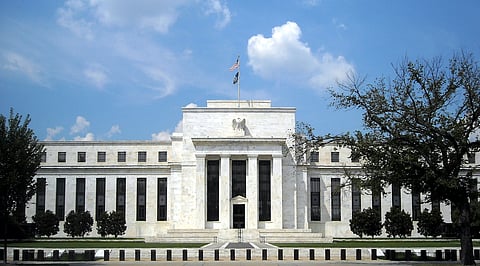The Marriner S. Eccles Federal Reserve Board Building (commonly known as the Eccles Building or Federal Reserve Building) located at 20th Street & Constitution Avenue, NW in the Foggy Bottom neighborhood of Washington, D.C.
Locked
Fed set to raise rates by 0.75 point and debate size of future hikes
Officials are raising rates at the most aggressive pace since the early 1980s. Until June, they hadn’t raised rates by 0.75 point since 1994. Investors in interest-rate futures markets now expect the Fed to raise rates to 5% by the spring.

